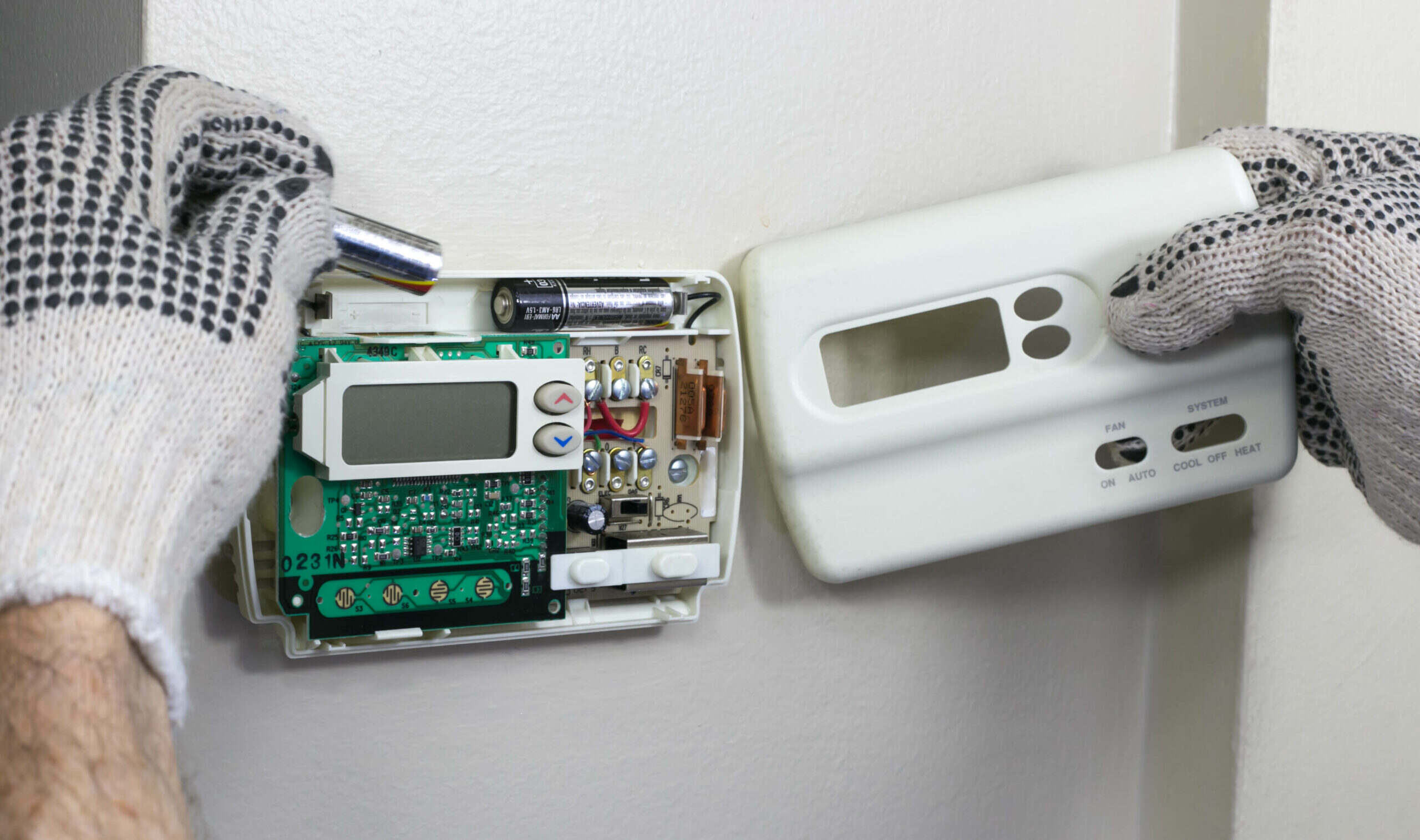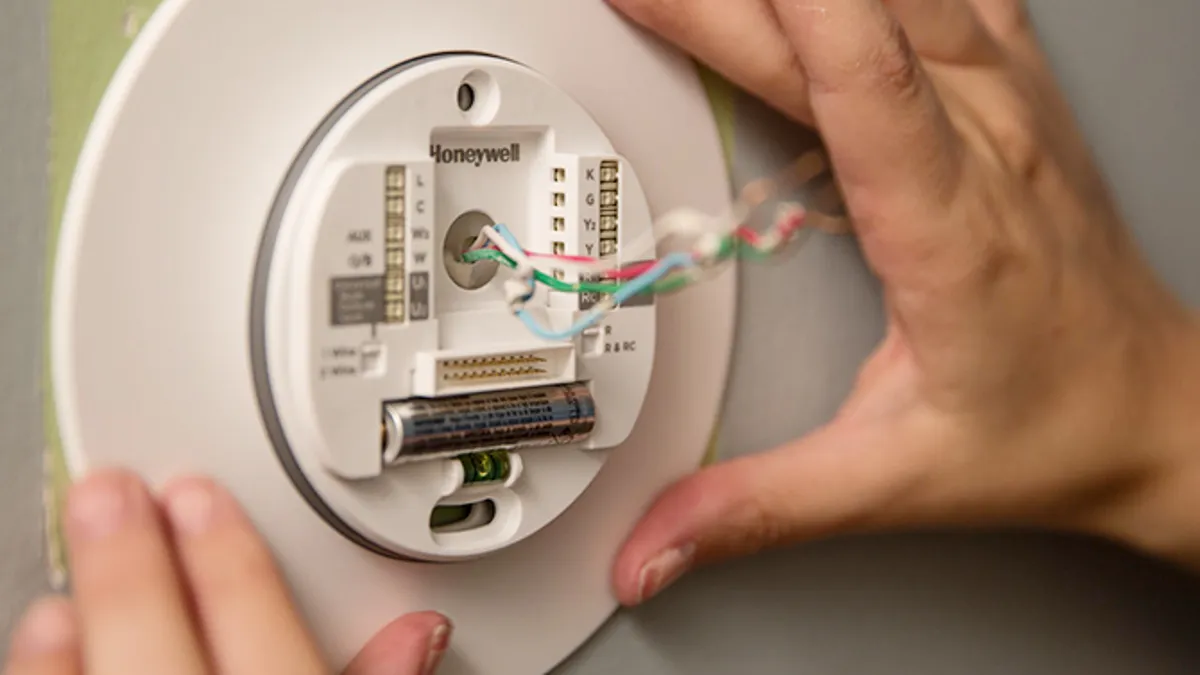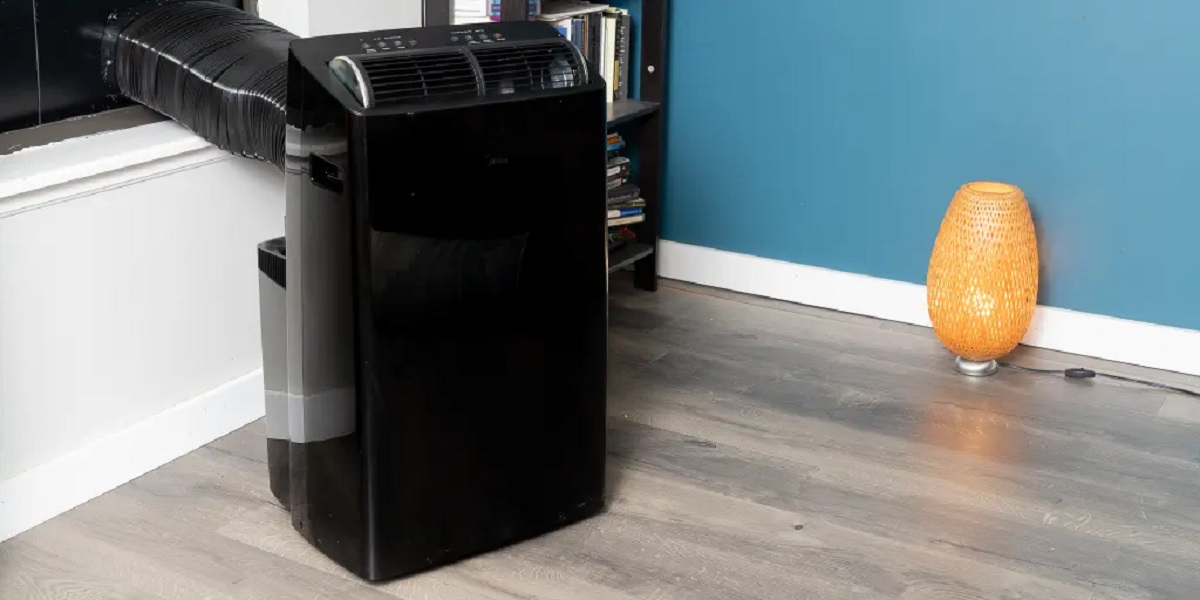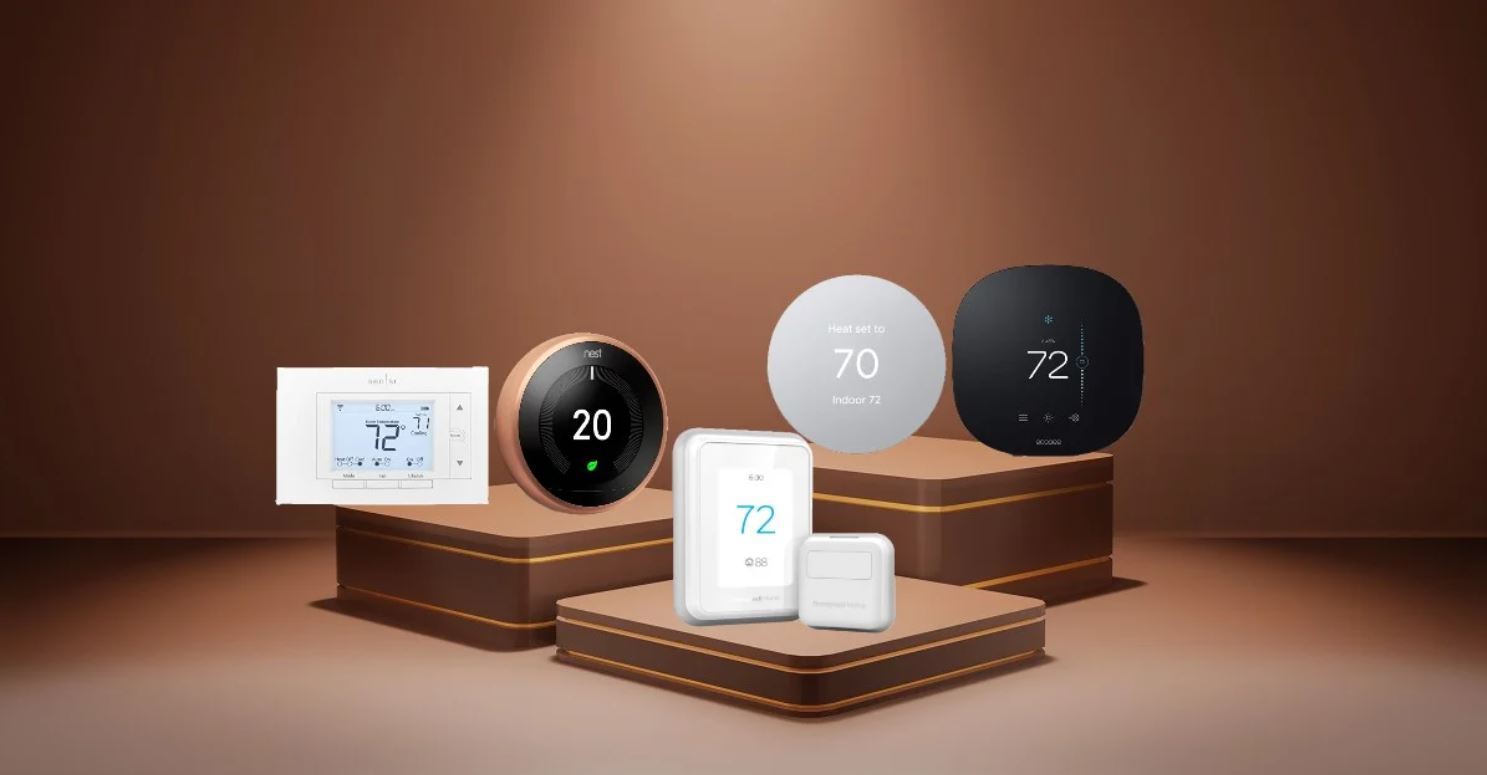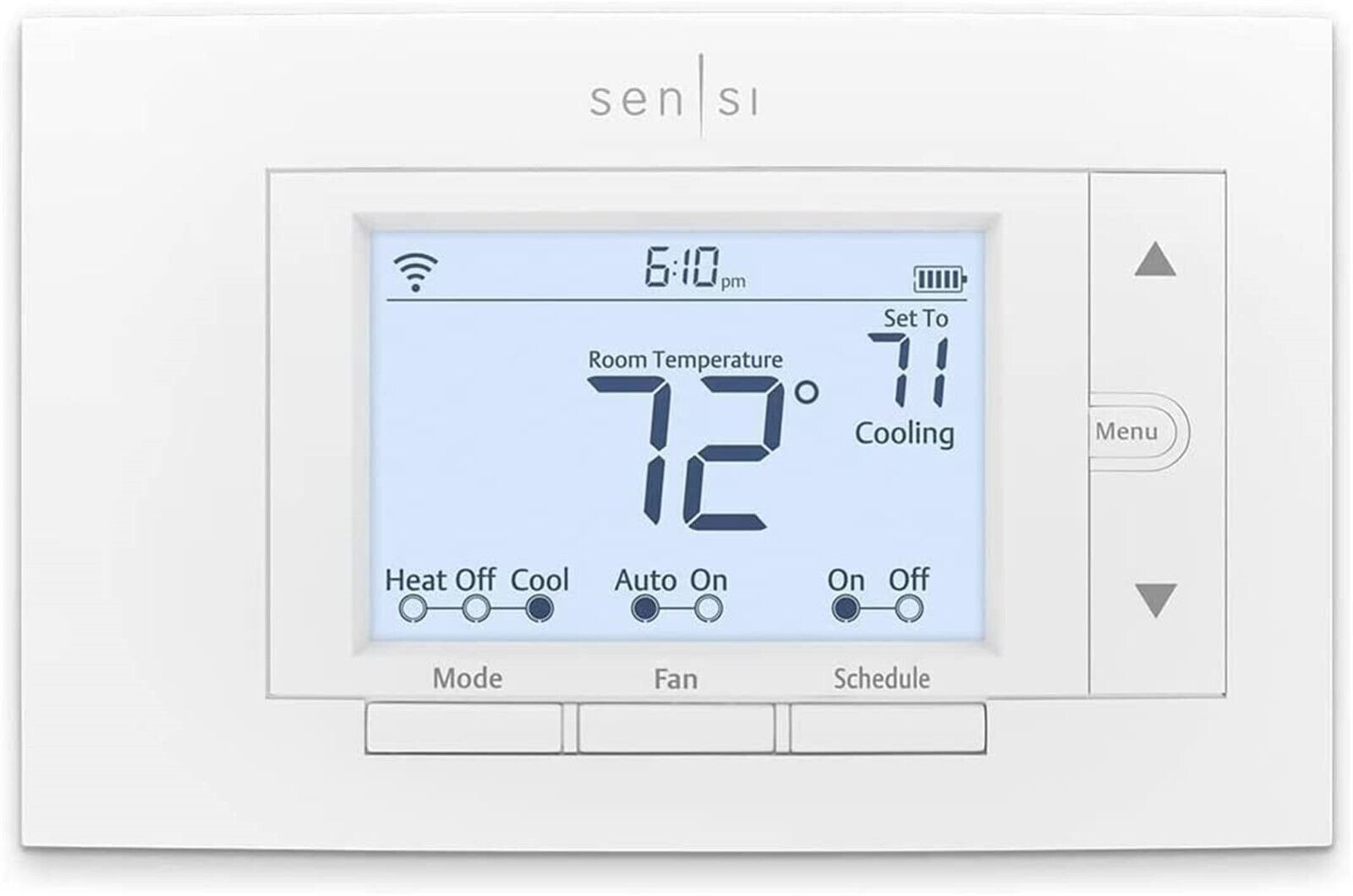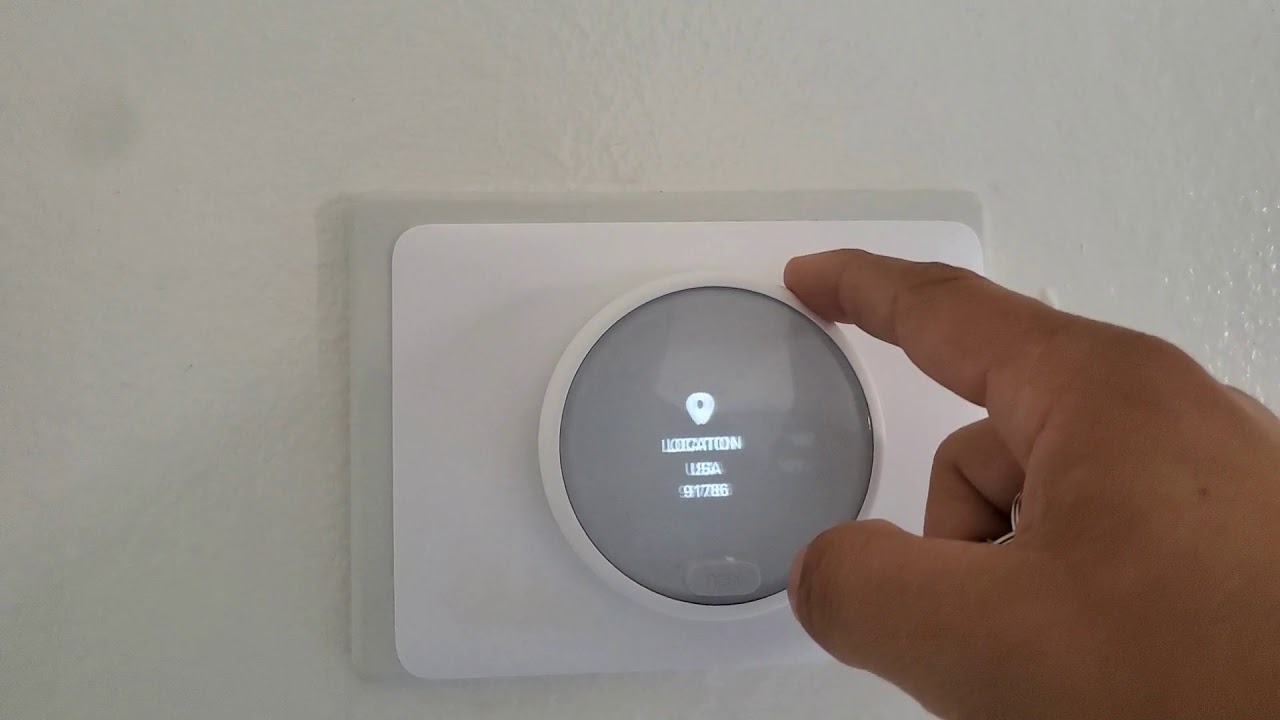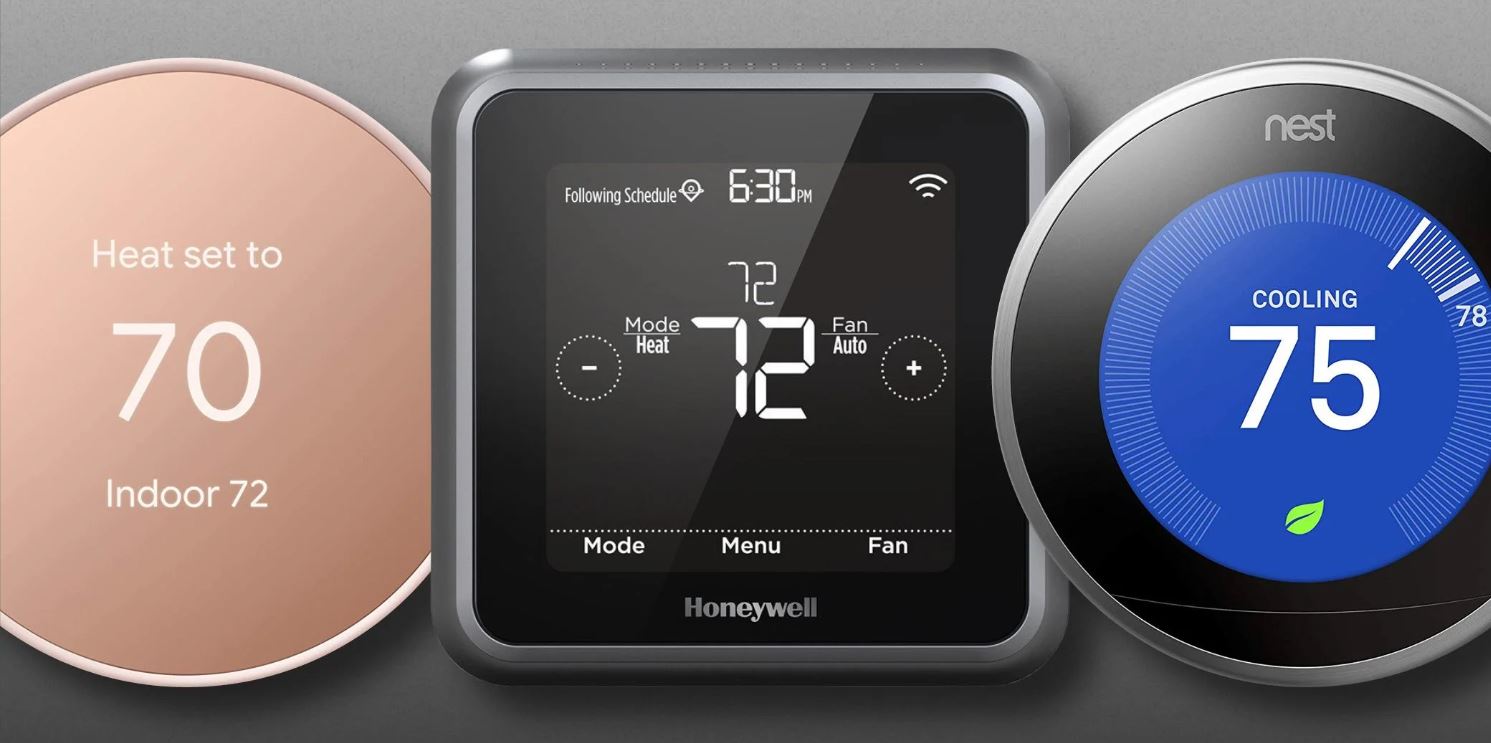Introduction
Thermostats play a crucial role in regulating the temperature of our homes or offices. They are responsible for turning our heating or cooling systems on or off to maintain a comfortable environment. While thermostats are essential devices, it may seem curious to some why they require batteries to function. This article will delve into the reasons behind this requirement and shed light on the various aspects of thermostat batteries.
Thermostats are marvels of modern technology that allow us to control the indoor climate with ease. From traditional mechanical thermostats to smart, programmable ones, these devices come in different forms and offer a range of features. Despite the technological advancements, one common element among most thermostats is the need for batteries to power their operation.
Now, you may be wondering why thermostats, which are typically connected to power sources in homes or buildings, still rely on batteries. The answer lies in the crucial function that batteries serve in ensuring uninterrupted operation and maintaining the settings even during power outages. The batteries act as a backup power source, allowing the thermostat to continue functioning and retain its programmed settings.
Thermostats work by monitoring the temperature in the space they are installed in. They compare the current temperature to the desired temperature set by the user and send signals to the heating or cooling system accordingly. This continuous monitoring and communication require a reliable and constant power source, which is where the batteries come into play.
The use of batteries in thermostats not only provides a backup power supply but also offers flexibility in terms of thermostat placement. Since thermostats don’t need to be connected to an electrical outlet, they can be installed in various locations around the house without the limitation of wiring availability. This allows homeowners to position thermostats in optimal spots for accurate temperature sensing, resulting in more efficient heating and cooling.
In the following sections, we will explore the different types of thermostats that utilize batteries, the advantages they offer, and common issues associated with thermostat batteries. Additionally, we will provide tips for maintaining thermostat batteries to ensure their longevity and reliable operation.
How Thermostats Work
To understand why thermostats require batteries, it’s essential to grasp how these devices work. At their core, thermostats are temperature-sensing devices that regulate heating and cooling systems. They monitor the temperature in a specific area, compare it to the desired temperature set by the user, and send signals to the HVAC (Heating, Ventilation, and Air Conditioning) system to adjust accordingly.
Thermostats can come in mechanical or electronic forms. Mechanical thermostats use a bimetallic strip that expands or contracts based on temperature changes. As the strip expands, it triggers a switch that turns on or off the heating or cooling system. While mechanical thermostats are simple and cost-effective, they may lack precision and advanced features.
Electronic thermostats, on the other hand, are more sophisticated and precise. They utilize electronic sensors, such as thermistors or infrared sensors, to measure the temperature accurately. These sensors convert temperature changes into electrical signals, which are then processed by the thermostat’s circuitry.
Once the thermostat receives the temperature information, it compares it to the desired temperature set by the user. If the current temperature is lower than the desired temperature, the thermostat sends a signal to the heating system to turn on. Conversely, if the current temperature is higher than the desired temperature, the thermostat sends a signal to the cooling system to start. The system continues to operate until the desired temperature is reached.
In addition to temperature regulation, modern thermostats offer various programmable features. Programmable thermostats allow users to set different temperature profiles throughout the day, optimizing energy usage and comfort. For example, you can program the thermostat to lower the temperature when you’re not at home and raise it before you return. These features provide flexibility, convenience, and energy savings.
Now that we understand the basic functioning of thermostats, let’s explore the power sources that enable them to perform their critical tasks.
Power Sources for Thermostats
Thermostats require a power source to operate effectively. While some thermostats can be hardwired to the electrical system of a building, many models rely on batteries to function. Let’s take a closer look at the various power sources used in thermostats.
1. Batteries: The most common power source for thermostats is batteries. These can include standard alkaline batteries or rechargeable batteries. Batteries serve as a backup power supply, ensuring that the thermostat continues to function even during power outages. They also provide the necessary energy for the thermostat to maintain programmed settings and accurately measure temperature fluctuations.
2. Line Voltage: Some thermostats are powered directly by the electrical system of the building. These thermostats, known as line voltage thermostats, typically operate on 120 or 240 volts. They don’t require batteries and are wired directly to the electrical circuit. Line voltage thermostats are commonly used in high-voltage systems, such as baseboard heaters or electric furnaces.
3. Low Voltage: Low voltage thermostats are another type that doesn’t rely on batteries for power. They operate on 24 volts, which is supplied through a transformer connected to the HVAC system. Low voltage thermostats are commonly used in central heating and cooling systems, where the 24-volt power is readily available.
4. Hybrid Systems: There are also hybrid systems that combine both line voltage and low voltage components. These systems use line voltage wiring to power certain elements, such as the heating system, while utilizing low voltage wiring for the thermostat controls. It’s important to understand the specific requirements of your heating and cooling system to choose the appropriate type of thermostat.
It’s worth noting that battery-powered thermostats offer advantages in terms of installation flexibility. Since they don’t rely on electrical wiring, they can be conveniently installed in locations that are optimal for accurate temperature measurement, rather than being limited by wiring availability.
In the next section, we will explore why thermostats need batteries despite being connected to power sources, as well as the different types of thermostats that utilize batteries.
Why Do Thermostats Need Batteries
It’s natural to wonder why thermostats, which are typically connected to power sources in homes or buildings, still require batteries to function. While thermostats could technically rely solely on the electrical supply, they often incorporate batteries for several important reasons:
1. Backup Power: One of the primary reasons thermostats have batteries is to provide a backup power source. In the event of a power outage, the batteries ensure that the thermostat continues to function and retain its programmed settings. This is especially crucial in maintaining temperature control and preventing any sudden shifts that could lead to discomfort or potential damage to the property.
2. Continuous Operation: Batteries allow thermostats to operate consistently, regardless of the availability of electrical power. This ensures that the thermostat can accurately measure the temperature and send signals to the heating or cooling system without interruptions or downtime. As a result, occupants can enjoy a comfortable environment even during power disruptions.
3. Flexibility in Placement: Battery-powered thermostats offer the advantage of flexible placement. Since they do not require a direct connection to an electrical outlet, they can be installed in various locations around a property. This flexibility allows homeowners to position thermostats in optimal spots for precise temperature sensing, resulting in more efficient heating and cooling.
4. Simplified Installation: Battery-powered thermostats are relatively easy to install compared to their wired counterparts. Without the need for electrical wiring, homeowners can easily mount the thermostat on the wall and get it up and running in no time. This simplicity of installation makes battery-powered thermostats a popular choice for DIY enthusiasts and homeowners who prefer to avoid complex wiring processes.
5. Increased Compatibility: Battery-powered thermostats are compatible with a wide range of heating and cooling systems. Unlike line voltage thermostats that are specifically designed for high-voltage systems, battery-powered thermostats can be used with both low voltage and line voltage HVAC systems, eliminating any compatibility concerns.
While batteries are essential for proper thermostat functionality, it’s important to note that they require occasional replacement or recharging. Regular battery maintenance ensures that the thermostat continues to operate smoothly and avoid any potential disruptions in the temperature control system.
In the next section, we will explore the different types of thermostats that utilize batteries and highlight the advantages they offer.
Types of Thermostats That Use Batteries
Thermostats that utilize batteries come in various types, each offering its own set of features and advantages. Let’s explore some of the common types of battery-powered thermostats:
1. Programmable Thermostats: Programmable thermostats allow users to set temperature profiles for different times of the day or week. These thermostats typically have an LCD screen and various control buttons for easy programming. The use of batteries ensures that the programmed settings are retained even during power outages, ensuring consistent temperature control and energy efficiency.
2. Wi-Fi Enabled Thermostats: Wi-Fi-enabled thermostats take home comfort and convenience to the next level. These thermostats connect to a home’s wireless network, allowing users to control the temperature remotely through a smartphone app or web interface. The batteries in these thermostats provide backup power, ensuring that the thermostat remains operational even if the Wi-Fi or electrical power is temporarily disrupted.
3. Smart Thermostats: Smart thermostats combine programmable features with advanced technologies such as learning algorithms and sensors to optimize energy usage and comfort. They adapt to the occupants’ schedules and preferences, learning from their behavior and making automatic temperature adjustments. Similar to programmable and Wi-Fi-enabled thermostats, smart thermostats rely on batteries to maintain their settings and continue functioning during power failures.
4. Battery-Powered Mechanical Thermostats: While electronic thermostats are more prevalent today, some traditional mechanical thermostats still use batteries. These batteries power the display and enable the mechanical switch to operate smoothly. Although not as advanced as electronic thermostats, mechanical thermostats with batteries still provide reliable temperature control.
Regardless of the type, battery-powered thermostats offer the advantage of flexibility in installation. They don’t require wiring to an electrical outlet, allowing homeowners to place them in optimal locations for accurate temperature sensing.
The use of batteries also ensures that the thermostat continues to function during power outages, maintaining consistency in temperature control and preventing any sudden changes that could affect comfort levels. In addition, battery-powered thermostats are compatible with a wide range of heating and cooling systems, making them a versatile choice for different homes or buildings.
In the next section, we will explore the advantages of using battery-powered thermostats and highlight their benefits for homeowners and occupants.
Advantages of Battery-Powered Thermostats
Battery-powered thermostats offer several advantages that make them a popular choice among homeowners. Let’s explore the benefits of using battery-powered thermostats:
- Flexibility in Placement: Battery-powered thermostats can be installed in various locations around a home or building without the constraints of electrical wiring. This flexibility allows homeowners to position the thermostat in optimal spots for accurate temperature measurement, resulting in more efficient heating and cooling.
- Backup Power: One of the primary advantages of battery-powered thermostats is their ability to continue functioning during power outages. The batteries act as a backup power source, ensuring uninterrupted temperature control and retaining the programmed settings. This is particularly important in maintaining comfort levels and preventing any sudden fluctuations that could impact occupants.
- Easy Installation: Battery-powered thermostats are relatively easy to install compared to wired thermostats. Without the need for complex electrical wiring, homeowners can simply mount the thermostat on the wall and get it up and running quickly. This simplicity of installation makes battery-powered thermostats a popular choice for DIY enthusiasts and those who prefer a hassle-free setup process.
- Compatibility: Battery-powered thermostats are compatible with a wide range of heating and cooling systems. Unlike line voltage thermostats that are designed for specific high-voltage systems, battery-powered thermostats can be used with both low voltage and line voltage HVAC systems. This versatility eliminates compatibility concerns and allows homeowners to choose the thermostat that best suits their needs.
- Energy Efficiency: Battery-powered thermostats, particularly programmable and smart thermostats, offer energy-saving features. They allow users to set temperature profiles based on their schedule, optimizing energy usage by reducing heating or cooling when no one is home. By maximizing energy efficiency, battery-powered thermostats can help homeowners save on energy bills while maintaining a comfortable indoor environment.
Battery-powered thermostats provide convenience, adaptability, and reliable performance. They ensure continuous temperature control, even during power outages, and offer flexibility in placement without the constraints of electrical wiring. With compatibility across different heating and cooling systems, battery-powered thermostats are a versatile choice for various homes or buildings.
In the next section, we will discuss common issues associated with thermostat batteries and provide tips for maintaining them to ensure reliable operation.
Common Issues with Thermostat Batteries
While battery-powered thermostats provide numerous benefits, there are some common issues that homeowners may encounter with thermostat batteries. Understanding these issues can help users troubleshoot and resolve any potential problems. Let’s explore some of the common issues associated with thermostat batteries:
- Battery Drain: Over time, batteries can drain and lose their power. This can cause the thermostat to malfunction or shut down completely. Factors such as frequent temperature adjustments or low-quality batteries can contribute to faster battery drain. Regularly checking and replacing batteries can help prevent this issue.
- Incorrect Battery Installation: It is important to correctly install the batteries in the thermostat to ensure proper functionality. Reversed or misaligned batteries can result in the thermostat not receiving adequate power, leading to erratic behavior. Double-checking the battery installation can help resolve this issue.
- Corroded Battery Contacts: Over time, battery contacts can accumulate corrosion, hindering the flow of electricity between the batteries and the thermostat. This can lead to a loss of power or intermittent function. Cleaning the battery contacts using a soft cloth or a cotton swab dipped in vinegar can help remove any corrosion and restore proper contact.
- Temperature Display Issues: In some cases, low battery power can cause the temperature display on the thermostat to become dim or unreadable. This can make it challenging to accurately read and adjust the temperature settings. Replacing the batteries can often resolve this issue and restore the proper display.
- Unexpected Shutdown: If the thermostat unexpectedly shuts down or loses power, it can be a sign of a battery-related issue. This can occur due to depleted batteries or loose battery connections. Checking the battery level and ensuring a secure battery connection can help prevent unexpected shutdowns.
Regular maintenance and monitoring of thermostat batteries can help address many of these common issues. It is recommended to replace batteries at least once a year, or as needed, to ensure reliable operation. Using high-quality batteries and following the manufacturer’s guidelines can also contribute to longer battery life and optimal thermostat performance.
In the next section, we will discuss how long thermostat batteries typically last and provide tips for maintaining them to ensure their longevity.
How Long Do Thermostat Batteries Last
The lifespan of thermostat batteries can vary depending on several factors, including the type of batteries used, the frequency of temperature adjustments, and the overall energy consumption of the thermostat. While it is difficult to provide an exact duration for battery life, we can generally estimate the typical lifespan.
Most battery-powered thermostats utilize AA or AAA batteries, which are commonly available and relatively inexpensive. Alkaline batteries, such as Duracell or Energizer, are commonly used and can last anywhere from one to two years with regular usage. However, it’s important to note that factors such as frequent adjustments or low-quality batteries can lead to faster battery drain.
In contrast, rechargeable batteries offer a more environmentally-friendly option and can last for several months before needing to be recharged. With proper maintenance and regular recharging, rechargeable batteries can provide long-term power while reducing waste from disposable batteries.
It’s essential to monitor the battery level or performance of the thermostat regularly. Some thermostats may have a battery indicator on the display, indicating the remaining power level of the batteries. If the battery level is low or the display becomes dim, it is advisable to replace or recharge the batteries promptly to prevent any disruption in the thermostat’s functionality.
Additionally, extreme temperatures can affect the lifespan of thermostat batteries. Extreme heat or cold can impact the performance and longevity of batteries. It is recommended to install the thermostat in a moderate temperature location to optimize battery lifespan.
Overall, while the lifespan of thermostat batteries can vary, being proactive in monitoring and maintaining the batteries can ensure reliable operation of the thermostat and prevent any unexpected shutdowns or malfunctions.
In the next section, we will provide some tips for maintaining thermostat batteries to ensure their longevity and reliable operation.
Tips for Maintaining Thermostat Batteries
Maintaining thermostat batteries is essential to ensure their longevity and reliable operation. Here are some tips to help you maintain your thermostat batteries:
- Regularly Check Battery Level: Keep an eye on the battery level indicator on your thermostat display, if available. If the battery level is low or the display becomes dim, it’s time to replace or recharge the batteries. Regularly checking the battery level prevents any unexpected shutdowns or malfunctions.
- Use High-Quality Batteries: Invest in high-quality batteries for your thermostat. Alkaline batteries from reputable brands like Duracell or Energizer tend to offer better performance and longer lifespan compared to generic or low-quality batteries.
- Consider Rechargeable Batteries: Rechargeable batteries provide an eco-friendly and cost-effective alternative. Consider using rechargeable batteries and a compatible charger. With regular recharging, you can extend the battery lifespan and reduce waste from disposable batteries.
- Install Batteries Correctly: Ensure that you install the batteries correctly in your thermostat. Follow the correct polarity (+/-) indicated on the battery compartment. Incorrect installation can prevent the batteries from making proper contact and result in erratic thermostat behavior.
- Clean Battery Contacts: Over time, battery contacts can accumulate corrosion, hindering the flow of electricity. Periodically clean the battery contacts with a soft cloth or a cotton swab dipped in vinegar. Gently rub the contacts to remove any corrosion and ensure proper contact between the batteries and the thermostat.
- Avoid Extreme Temperatures: Extreme temperatures can impact battery performance. Avoid placing your thermostat in areas with direct sunlight, excessive heat, or extreme cold, as these conditions can shorten the lifespan of the batteries. Choose a moderate temperature location for optimal battery operation.
- Replace Batteries Annually: As a general rule, it’s advisable to replace the thermostat batteries at least once a year, even if the battery level appears to be sufficient. This proactive approach helps prevent potential battery failures and ensures reliable operation throughout the year.
By following these tips, you can maximize the lifespan of your thermostat batteries and avoid any interruptions in the temperature control system. Remember to perform regular maintenance and keep an eye on the battery level indicator to ensure your thermostat remains in optimal working condition.
In the next section, we will conclude our discussion on thermostat batteries and their importance in maintaining a comfortable indoor environment.
Conclusion
Thermostats are essential devices that regulate the temperature of our living and working spaces. While they can be powered by various sources, including line voltage or low voltage, many thermostats rely on batteries to ensure uninterrupted operation, flexibility in placement, and backup power during outages. This article has explored the reasons behind the need for batteries in thermostats and highlighted the advantages of battery-powered thermostats.
We learned that thermostats work by monitoring the temperature and sending signals to the heating or cooling systems based on the desired temperature set by the user. Batteries serve as a backup power source, maintaining the programmed settings and allowing thermostats to function even during power outages. Battery-powered thermostats offer flexibility in placement as they don’t require a direct connection to electrical outlets, making them suitable for various locations.
We discussed different types of battery-powered thermostats, such as programmable thermostats, smart thermostats, and Wi-Fi-enabled thermostats, each offering unique features and benefits. Programmable thermostats allow for energy-saving temperature profiles, while Wi-Fi-enabled thermostats provide remote access and control. Smart thermostats utilize advanced technologies to learn and adapt to occupants’ preferences, further optimizing comfort and energy efficiency.
We also addressed common issues with thermostat batteries, including battery drain, incorrect installation, corroded contacts, display issues, and unexpected shutdowns. Regular maintenance and monitoring can help resolve these issues and ensure reliable battery performance. Additionally, we provided tips for maintaining thermostat batteries, such as using high-quality batteries, cleaning battery contacts, and avoiding extreme temperatures.
By following these maintenance tips and staying mindful of battery levels, homeowners can maximize the lifespan and efficiency of their battery-powered thermostats. This not only ensures consistent temperature control but also contributes to energy savings and overall comfort.
In conclusion, battery-powered thermostats offer convenience, flexibility, and backup power to maintain a comfortable indoor environment. Understanding their importance, common issues, and maintenance requirements allows homeowners to make informed choices and enjoy optimal performance from their thermostats.







